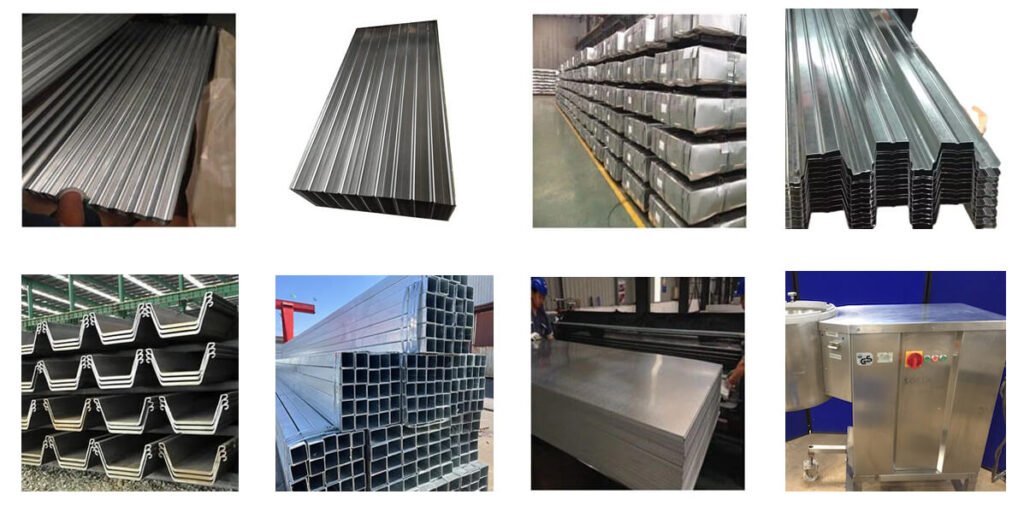HSLA Steel Grades
High-Performance, Corrosion-Resistant Structural Steel for Industrial and Automotive Applications
- Technical Support
HSLA Steel Technical Specifications & Applications
High-Strength Low-Alloy (HSLA) steel is a hot-rolled carbon steel grade under ASTM A1011, engineered for applications requiring enhanced strength, formability, and weldability. HSLA steels are designed with specific mechanical properties rather than a fixed chemical composition, offering a balance between strength and ductility. These steels are characterized by increased yield strength, improved fatigue resistance, and better weldability compared to conventional carbon steels. Common alloying elements include small amounts of manganese, silicon, copper, nickel, niobium, vanadium, and titanium, which contribute to the steel’s strength and toughness.
HSLA steels are widely used in automotive, construction, and structural applications where weight reduction and high strength are critical. They are particularly suitable for components like chassis, suspension systems, and structural beams.
Table of Contents
1. Typical Uses & Selection Guidance
- HSLA Overview HSLA (High-Strength Low-Alloy) steels are hot-rolled structural steel grades designed for applications requiring high strength, durability, and moderate formability. These steels offer superior mechanical properties compared to conventional carbon steels, making them suitable for demanding construction, automotive, and structural applications.
- Corrosion Protection HSLA steels can be coated with zinc or aluminum-zinc alloys to enhance corrosion resistance in industrial or outdoor environments. Coatings maintain a smooth surface and improve heat resistance for high-temperature applications.
- Forming Advantages HSLA steels provide high tensile strength, good elongation, and excellent bendability. They allow efficient bending, cutting, and shaping for structural beams, columns, automotive components, and heavy-duty supports. Strict quality control ensures consistent mechanical properties and reliable performance in construction and manufacturing applications.
2. Technical Specifications Table
1. Chemical Composition Requirements (Maximum %)
| Steel Grade | Carbon (C) | Silicon (Si) | Manganese (Mn) | Phosphorus (P) | Sulfur (S) | Titanium (Ti) |
|---|---|---|---|---|---|---|
| HSLA | ≤ 0.26% | ≤ 0.90% | ≤ 1.65% | ≤ 0.04% | ≤ 0.04% | ≥ 0.005% |
2. Mechanical Property Requirements (Maximum Values)
| Steel Grade | Min. Yield Strength (MPa) | Min. Tensile Strength (MPa) | Min. Elongation (%) Lo=80 mm | Bend Angle (°) | Mandrel Diameter (× Thickness t) |
|---|---|---|---|---|---|
| HSLA | 275 | 340–520 | ≥20% | 180° | 1t |
3. Mechanical Property Requirements (Maximum Values)
| Coating Class | Mandrel Diameter (× Thickness t) |
|---|---|
| Z100, Z200 | 1t |
| Z275, Z350, Z450, AZ150, AZ200, AM100, AM125, AM150, AM175, AM200, AM225 | 2t |
| Z600 | 3t |
4. Applicable Hot-Dip Metallic Coating Types
| Coating Class | Composition (%) | Key Features |
|---|---|---|
| Z (Zinc) | ≥99% Zinc | Basic corrosion protection; suitable for general use. |
| ZA (Zinc-Aluminium) | 95% Zn, 5% Al | Improved corrosion resistance over pure zinc. |
| ZF (Zinc-Iron) | Zinc with iron alloy | Enhanced hardness and wear resistance. |
| ZM (Zinc-Magnesium) | Zn with 2–4% Mg, 5–13% Al | Superior corrosion resistance in harsh environments. |
| AZ (Aluminium-Zinc) | 55% Al, 43.5% Zn, 1.5% Si | Excellent corrosion resistance and heat reflectivity. |
| AM (Aluminium-Magnesium) | Al with Mg alloy | High corrosion resistance; suitable for high-temperature applications. |
3. HSLA vs SECC Steel — What’s the Difference?
| Property | HSLA Steel Grade | SECC Steel Grade |
|---|---|---|
| Yield Strength | ≥275 MPa | 140–280 MPa |
| Tensile Strength | 340–520 MPa | 270–410 MPa |
| Elongation (80 mm) | ≥20% | ≥28% |
| Bendability | 180° with 2t mandrel | 180° with 6t mandrel |
HSLA Steel FAQ:
HSLA (High-Strength Low-Alloy) steel is a type of alloy steel designed to provide superior mechanical properties and corrosion resistance compared to conventional carbon steel. It contains small amounts of alloying elements such as niobium, vanadium, titanium, and copper, enhancing strength, toughness, and durability for structural and industrial applications.
HSLA steels are widely used in industries requiring high strength-to-weight ratio and durability:
Automotive components like chassis, frames, and suspension systems
Construction materials, including bridges, beams, and cranes
Heavy machinery and industrial equipment
Pipelines and infrastructure projects
Their combination of strength, toughness, and corrosion resistance makes HSLA ideal for demanding applications.
HSLA steel differs from standard carbon steel in several key ways:
Composition: HSLA contains alloying elements for improved properties, while carbon steel has higher carbon and fewer alloying elements
Strength: HSLA offers higher yield and tensile strength
Corrosion Resistance: HSLA provides better protection against rust and oxidation
Weight Efficiency: Higher strength-to-weight ratio allows for lighter structural designs
These advantages make HSLA steels suitable for high-performance structural and automotive applications.
HSLA steel offers multiple benefits:
High strength and toughness for structural reliability
Enhanced corrosion resistance in industrial and outdoor environments
Good weldability and formability despite high strength
Weight reduction for vehicles and structural elements
Suitable for applications with demanding mechanical and environmental requirements
These properties improve performance and cost-efficiency in manufacturing, construction, and engineering projects.
Common HSLA grades include:
ASTM A36 – General-purpose structural steel
ASTM A572 – High-strength with improved corrosion resistance
ASTM A588 – Weathering steel for enhanced atmospheric durability
ASTM A656 – Heavy-duty applications requiring high strength
SAE 950X Series – Microalloyed steel for automotive components
Each grade is engineered to meet specific mechanical requirements for various industries.







